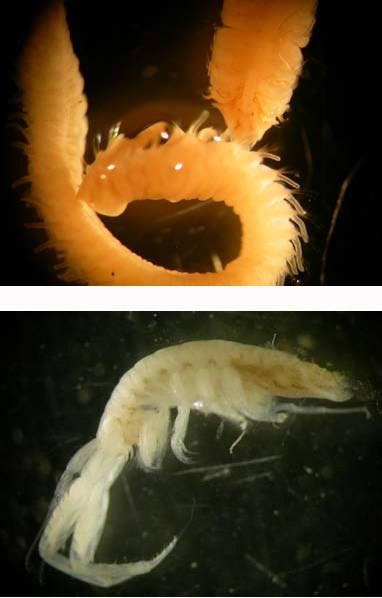Last updated: May 7, 2020
Article
Comparing the Effects of Invasive and Native Marsh Grasses on Estuarine Invertebrates

UC Davis / Elizabeth Brusati
The Question
When a non-native hybrid cordgrass invades a salt marsh, what happens to the small creatures that live there?
An invasive species is a non-native species often introduced into an ecosystem either intentionally or accidentally by human action. They have a tendency to spread, disrupt ecosystems by changing physical processes, or otherwise reduce the habitat available for native species. Smooth cordgrass (Spartina alterniflora), an east coast plant originally introduced to stabilize the shoreline, has become invasive in San Francisco Bay Marsh ecosystems. Smooth cordgrass cross-breeds with native California cordgrass, producing “super hybrids” (Spartina alterniflora x foliosa) that grow much taller and denser than the native species. These hybrids can also survive at both lower and higher points in the intertidal zone. If hybrid cordgrass became established within the estuaries of Point Reyes, it could fill many of the mudflats used by shorebirds, drastically reducing the birds’ foraging areas. The small invertebrates that live in the sediment of salt marshes and mudflats are the food for migrating shorebirds and form the base of the food web.

© Alex Bairstow
The Project
Compare invertebrates in California cordgrass marshes to those in hybrid Spartina marshes.
To study the effects of hybrid cordgrass on salt marshes, researchers examined which invertebrates were present in both marsh conditions. Core samples were collected from marshes at Point Reyes National Seashore. This involved using a pipe to collect a specified volume of sediment, which was then taken back to the lab, preserved in formalin, and washed through a fine sieve to separate out the organisms.
In addition, they conducted food web analysis to achieve a more nuanced picture of the ecosystem structure. To do this, researchers compared animals to potential food sources (plants and algae) to determine whether cordgrass might be one of the plants supporting the food web at a given site.

UC Davis / Elizabeth Brusati
Preliminary Results
Hybrid and California cordgrass differ in the way they affect marsh invertebrates.
Previous studies in other marshes show that the sediment around plants often contains more invertebrates than nearby mudflats. This is probably because stems and roots of the plants slow water movement, prevent erosion of sediment, and reduce soil temperatures by shading. If the simple presence of vegetation helped invertebrates, then the denser hybrid cordgrass vegetation would be expected to support more invertebrates relative to the surrounding mudflats than the less dense California cordgrass. However, our preliminary results indicate that while California cordgrass contained more invertebrates in vegetation than mudflats, hybrid cordgrass contained about the same number or fewer organisms than in unvegetated areas. This suggests that hybrid cordgrass may be too dense to offer suitable habitat for small invertebrates. In addition, most invertebrates do not seem to use the tough stems of hybrid cordgrass as a food source, while several species, especially crabs, use California cordgrass. These results imply that hybrid cordgrass would severely alter both marsh habitat structure and shorebird food resources if it were to become established in Point Reyes or nearby bays.
Additional Resources
Contact Information
Links
Pacific Coast Science & Learning Center
San Francisco Bay Area Inventory & Monitoring Network
San Francisco Bay Area Network Species Lists - Certified Species lists including residency, abundance, and native/non-native status.
This work partially funded through the Canon National Parks Science Scholars Program Student Fellowship.
Summary by Elizabeth Brusati, University of California, Davis, for the Pacific Coast Science and Learning Center, March 2006. Adapted by Maritte O'Gallagher, Febraury 2018.
Download PDF from the NPS Data Store
Tags
- point reyes national seashore
- salt marsh
- invertebrates
- wetlands
- cordgrass
- coastal
- exotic
- invasive
- grasses
- plants
- native
- research
- project summary
- pacific coast science and learning center
- invasive species
- non-native species
- san francisco bay area
- nonnative
- polychaetes
- bristle worms
- bristle worm
- corphium
- boccardia probosciedea
- crustacean
- cerithidea californica
- california horn snail
- horn snail
- snail
- mollusk
